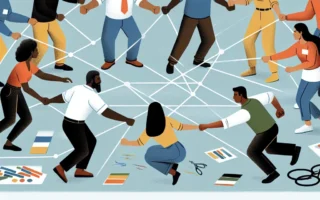The Importance of Clear and Open Communication in Agency Collaboration
Effective communication is the cornerstone of successful agency collaboration. When multiple agencies come together to work on a project or address a common goal, the importance of clear and open communication cannot be overstated. Clear communication ensures that all parties involved have a shared understanding of the objectives, timelines, responsibilities, and potential challenges. Open communication fosters trust, transparency, and a collaborative environment where ideas and concerns can be freely shared.
One of the key benefits of clear and open communication in agency collaboration is the avoidance of misunderstandings and the mitigation of conflicts. When each agency is transparent about their capabilities, limitations, and expectations, it becomes easier to align efforts and resources effectively. Moreover, open communication encourages a sense of unity and shared purpose, creating a cohesive team that is better equipped to tackle complex problems.
Furthermore, clear and open communication enables agencies to leverage each other’s strengths and expertise, leading to more innovative and comprehensive solutions. By openly discussing ideas and sharing knowledge, agencies can complement each other’s skill sets and perspectives, ultimately leading to better outcomes for the collaborative project or initiative.
In conclusion, the importance of clear and open communication in agency collaboration cannot be overlooked. It sets the foundation for effective teamwork, problem-solving, and innovation. By prioritizing transparent and open dialogue, agencies can build stronger relationships, achieve greater efficiency, and deliver more impactful results.
Building Trust and Understanding Through Effective Communication Strategies
Building trust and understanding through effective communication strategies is crucial for successful agency collaboration. Trust forms the foundation of any partnership, and it is cultivated through consistent and transparent communication. To establish trust, agencies should prioritize active listening, empathy, and open dialogue. By actively listening to the concerns and perspectives of their counterparts, agencies can demonstrate respect and a willingness to understand each other’s needs and concerns.
Furthermore, empathy plays a pivotal role in fostering trust and understanding. Agencies should strive to put themselves in the shoes of their collaborators, acknowledging their challenges and working together to find solutions. This empathetic approach not only strengthens relationships but also leads to more effective problem-solving and decision-making.
Open dialogue is another essential component of building trust and understanding. Clear, honest, and frequent communication helps to align expectations and goals, reducing the risk of misunderstandings or misinterpretations. Establishing open channels of communication, such as regular meetings or digital platforms, encourages transparency and ensures that all parties are informed and involved in the collaborative process.
In summary, building trust and understanding through effective communication strategies requires active listening, empathy, and open dialogue. By prioritizing these elements, agencies can lay a solid foundation for successful collaboration, leading to improved outcomes and stronger partnerships.
Overcoming Barriers to Communication for Successful Agency Collaboration
Effective communication is crucial for successful collaboration between agencies, yet there are often barriers that can hinder this process. Overcoming these barriers is essential for fostering a productive and efficient working relationship between agencies.
One of the primary barriers to communication is a lack of clarity in roles and responsibilities. When agencies are unsure of who is responsible for what, miscommunication and inefficiency can result. To overcome this, it is essential to establish clear lines of communication and clearly define the roles and responsibilities of each agency involved. This can be achieved through regular meetings, written agreements, and clear documentation of expectations.
Another common barrier to communication in agency collaboration is a difference in organizational culture and communication styles. Agencies may have varying communication norms and practices, leading to misunderstandings and conflict. By promoting an open and inclusive communication environment, agencies can work to understand and respect each other’s communication styles. Additionally, providing training and resources on effective cross-cultural communication can help bridge these gaps.
Furthermore, technological barriers, such as incompatible systems or security concerns, can impede communication and collaboration between agencies. Overcoming these barriers requires investment in compatible technology, cybersecurity measures, and training on how to effectively utilize these tools. Additionally, establishing clear protocols for data sharing and communication channels can help mitigate these challenges.
In conclusion, effective communication is the cornerstone of successful agency collaboration. By identifying and addressing barriers to communication, agencies can work towards building a strong and productive collaborative relationship, ultimately leading to more efficient and impactful outcomes.



